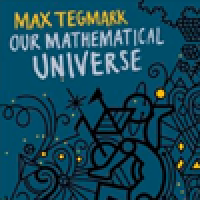
It's all maths!

Max Tegmark
If the characters in computer games attain consciousness one day, they probably won't believe that they are living in a world that's entirely described by the 0s and 1s of computer code. But something similar might go for us, too. Max Tegmark, a physicist at MIT, argues that the Universe we live in is not just very well described by mathematics, but that it is a mathematical structure. It's an idea he explores in his book, Our mathematical Universe, and about which he talked to us in our recent interview in London.
You can listen to the podcast using the player above, and you can listen and subscribe to our podcast through Apple Podcasts,
Spotify and through most other podcast providers via podbean.
Anonymous
Link on left (to download) works. Link on right does not.
Marianne
Thanks for pointing that out! We've fixed it.
Anonymous
I have no deep knowledge of this matter but could it be that a wave function exists in many dimensions in Hilbert Space (which i understand has infinite dimensions) all at the same time and that we observe it in "our" 3 space and 1 time dimension
When it changes (collapses) or divides into many other worlds it in fact simply manifests itself in a different dimensional profile in Hilbert space ie not in our 3 space + 1 time dimension so we cannot observe it
example say a wave function has arbitrarily 10 dimensions in Hilbert space and we observe only 4 of them 3 space+ 1 time and the other 6 are zero to us
After change it could be zero in "our" 3 space and embedded in dimension 5 6 7 + 1 of time so it it beyond our observation
I hope this is not rubbish but I have a horrible feeling it is
Michael Shields
Anonymous
I like that analogy you mentioned about looking into the video game, we see the pixels and know it is made up of numbers.